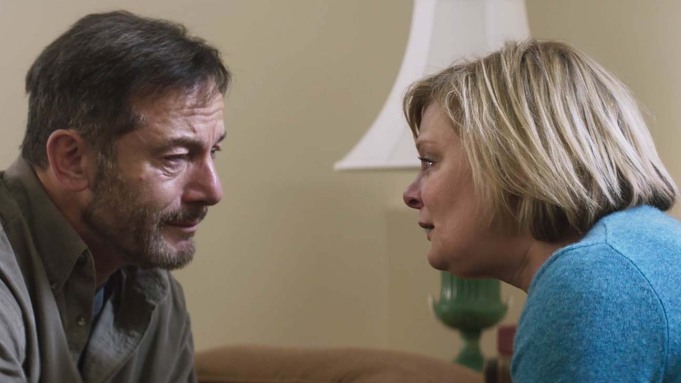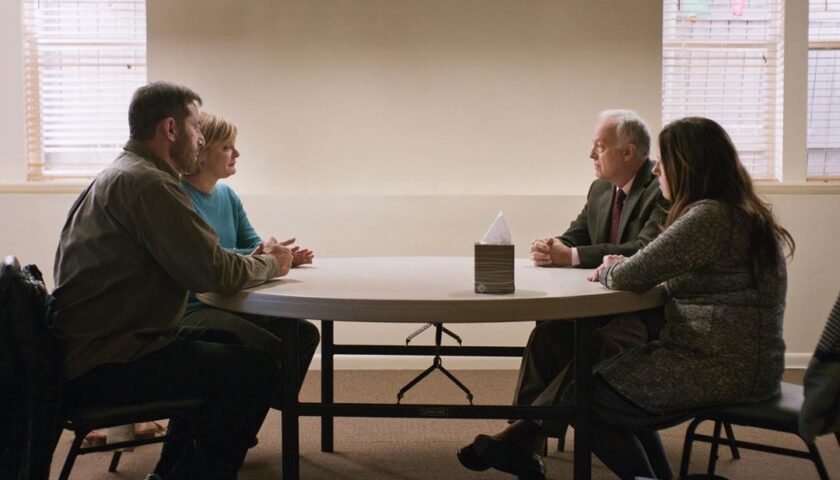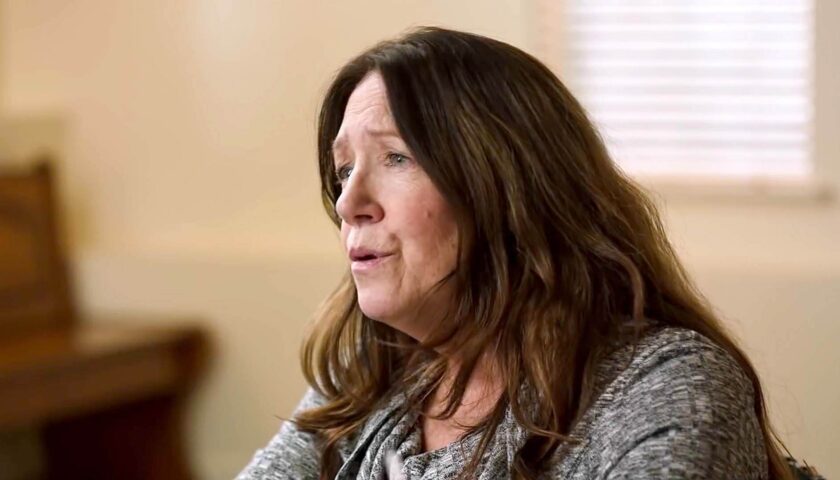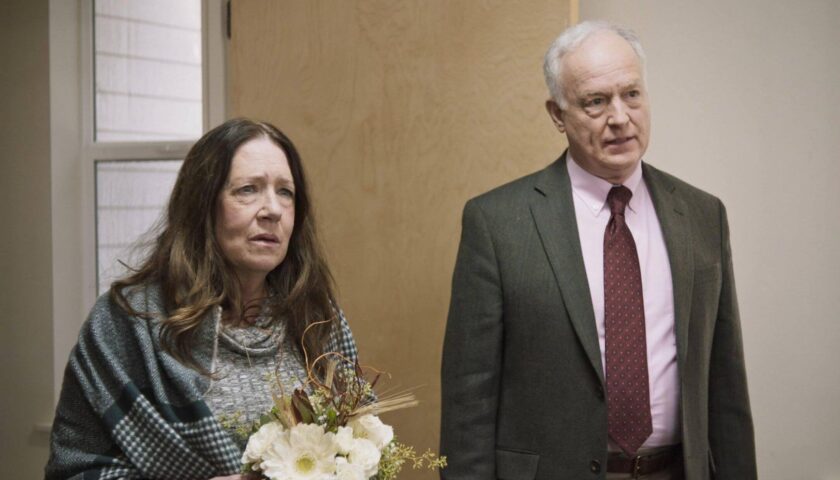“Mass” – Here’s my best advice to approach “Mass”, writer/director Fran Kranz’s first film.
Don’t watch the trailer.
This gripping, conversational drama is almost entirely set in one location. The four main characters confront a painful, deeply personal topic, one that has haunted them for years, but don’t ask a friend, sibling, your local movie critic, or the Internet the key matter that Jay (Jason Isaacs), Gail (Martha Plimpton), Linda (Ann Dowd), and Richard (Reed Birney) debate.
During an Oct. 10 interview with Collider, Kranz says, “Look, it has been a lot. It’s been emotional. It was emotional writing it. It was emotional making it, and it’s emotional talking about it. But I had no choice. This thing took over my life. I didn’t start doing the research because I wanted to make a movie. I started reading about these things because I was upset.”
Now, walking into Kranz’s film, knowing the issue that the four adults discuss won’t ruin the experience, like say, discovering that Malcolm Grove (Bruce Willis) is a ghost prior to watching “The Sixth Sense” (1999), but I didn’t see or hear the contents of “Mass” beforehand, and I’m grateful.
Nearly the entire film – that feels like a play with a brief prologue followed by one continuous act – takes place in an ordinary room, an unassuming spot with crème-colored walls. A white, circular plastic table (that you might pick up at Costco or Target) sits in the middle and four chairs rest around the synthetic edges.
It’s a quiet locale inside an Episcopal church, and the only potential for disturbances are piano and choir practices. Fortunately, nothing outside this confined but comfortable setting should interfere with the discussion between four people, a married couple and a divorced one.
They are in their 50s or 60s, and Jay and Gail will meet with Richard and Linda under apprehensive, uncomfortable circumstances.
Before reaching the church, Jay and Gail sit in their parked car, and cinematographer Ryan Jackson-Healy effectively captures the outdoor setting, a crisp and sunny fall afternoon in Sun Valley, Idaho. The couple dresses like they might stop by a pumpkin farm afterward, but today is no holiday.
Gail asks, “What the hell are we doing here?”
When everyone arrives at the church, awkward feelings accompany them. Linda makes a kind gesture by bringing flowers, but this considerate thought becomes a minor burden. Our eyes gaze at the aforementioned gift, and placing it at the center of the table creates a distraction.
A bother, actually.
At this point, the screenplay does not offer reasons for the consternation, and via this critic’s watch, we don’t receive a direct answer until 30 minutes into the movie. We realize that anxiety runs high, like if someone begrudgingly reconnects with an estranged parent for coffee or confronts a high school bully at a 10-year reunion.
Here, the stakes are infinitely raised, and Kendra (Michelle N. Carter), a no-nonsense counselor, mentions that she’s worked with Jay and Gail (or perhaps all four principals) for six years.
“Mass” is a gut-wrenching tale that may stick with you for eons, and it heavily leans on its masterclass actors and nuanced script. Nuanced and circular because the couples face a dinosaur-sized elephant when entering the room. They carefully tiptoe, tread, leap, jump, and fall back when approaching the said imposing article throughout the 110-minute runtime.
Jay and Gail look across the table and sometimes see enemies, although Richard and Linda are not foes by wishful design. Meanwhile, the said alleged antagonists are defensive, shamed, and face the potential for verbal prosecution.
However, no villains are present in this room.
They are all sequestered in a space for a little less than two hours, as the movie runs in real-time. Kranz, Jackson-Healy, and their camera sit in this nondescript chamber as if they are invisible. They film the four leads with individual close-ups or size them up through their natural pairings and don’t get fancy with dissolves, pans, or overhead shots.
Darren Morze composed music for the film, but did he include compositions during our time inside the room? I’ve seen the movie twice and don’t recall one single solitary note. Either because none existed, or the discourse so riveted me, I tuned out everything else.
Kranz thankfully keeps it simple, so our attention is squarely focused on what his characters say because, quite frankly, nothing else matters.
Pleasantries and polite inquiry commence but then organically morph into deeper inquisitions and raw feelings. These grown-ups attempt civil exchanges and hope to keep visceral emotions at bay, but that’s ultimately impossible.
Hopeful pragmatism holds, cracks, breaks, and occasionally shatters, but the prospect for answers exists. More importantly, the potential for healing may happen over a couple of hours.
“Healing is more about accepting the pain and finding a way to peacefully co-exist with it. Our life doesn’t have to end where the pain begins, but rather, it is where we start to mend.” – Jaeda DeWalt
Jay, Gail, Richard, and Linda will never fully mend, but they may stitch together fragments of recovery through this challenging connection. Still, they and we will need time, space, and plenty of tissues to recuperate.
Dear Academy, please consider Oscar nominations everywhere, including Best Picture.
⭐⭐⭐⭐ out of ⭐⭐⭐⭐
Written and directed by: Fran Kranz
Starring: Jason Isaacs, Martha Plimpton, Reed Birney, and Ann Dowd
Rated: PG-13
Runtime: 110 minutes
Image credits: Bleecker Street







